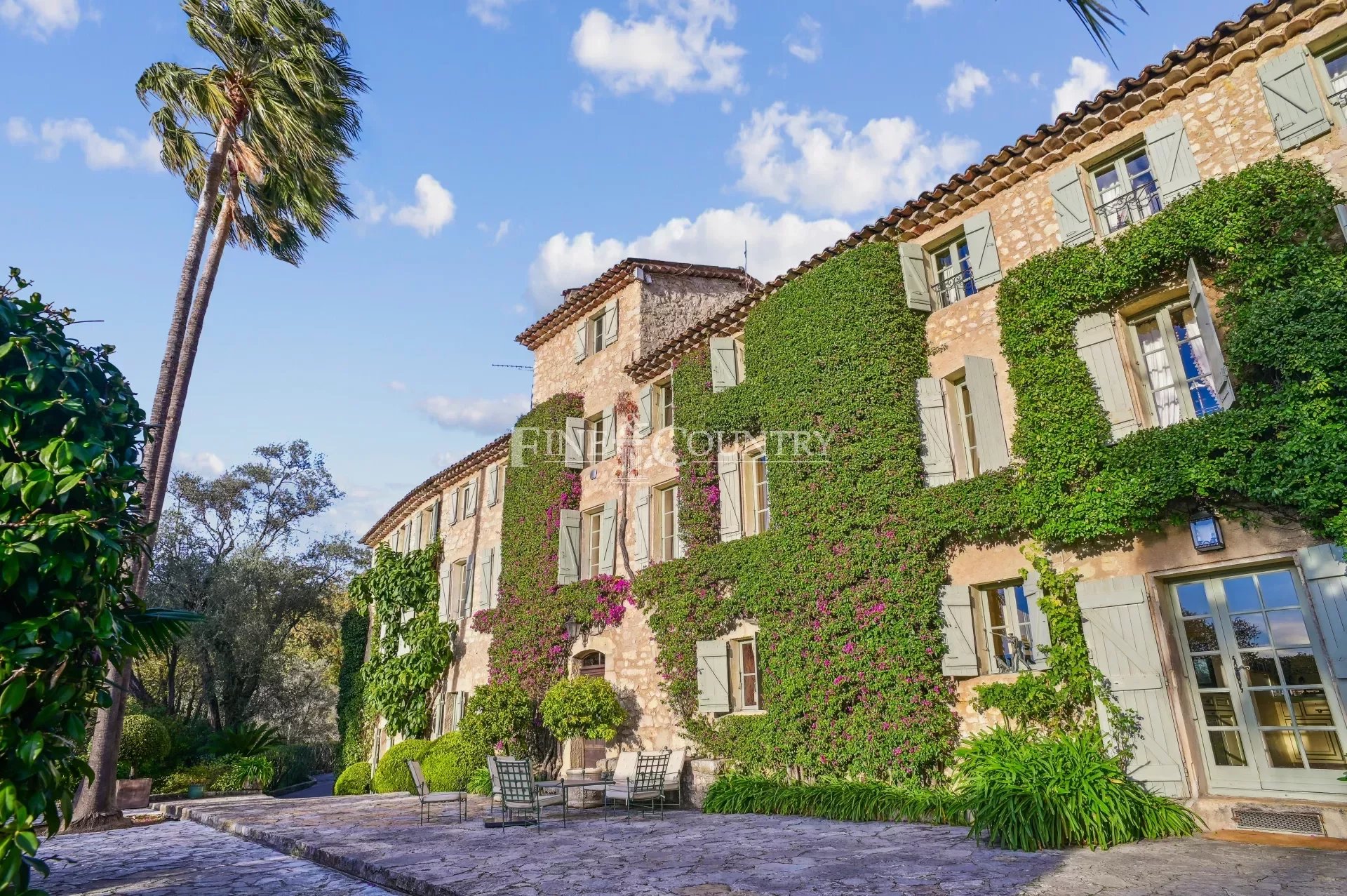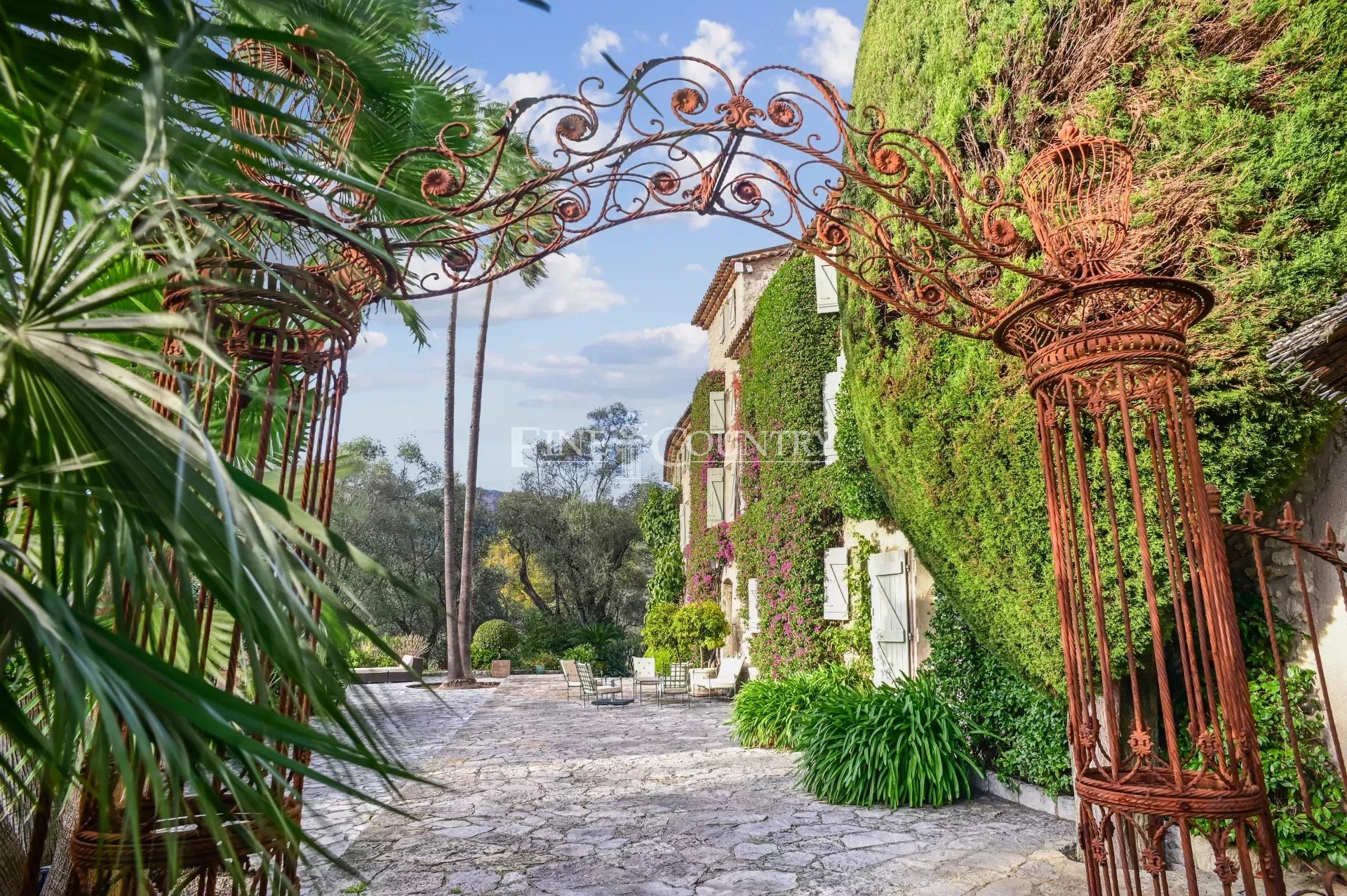Villas and houses for sale in Grasse
GRASSE
Grasse is perched in the hills overlooking Cannes and Mougins just half an hour from Cannes, and well-served by busses and a relatively new rail link. Started in March 2005, the line connects Grasse to Cannes (in 25 minutes), and then on to Antibes, Nice, Monaco, Menton, and Ventimiglia, all without changing. The hourly trains are modern TER double-deckers and the top level allows one excellent views of the countryside, villages and homes, rose plantations and olive groves, ancient ‘mas’ (old farm houses), ancient stone aqueducts and fields of wild flowers.
Grasse has been the home and perfume capital of France and the world since the 17th century and still accounts for two thirds of France’s production. The three historic perfume houses, Fragonard, Galimard and Molinard, welcome visitors and provide free guided tours of their factories and the chance to test (and buy) their products on site.
The smell of flowers and the cool clear summer air 350m above the sea have drawn visitors and property investors for centuries including Princess Pauline Bonaparte the Emperors sister and Queen Victoria who both spent considerable time here, the latter staying at the Rothschild’s villa or the Grand Hotel.
The centre of the town is a melee of narrow winding streets and stairways, a square Saracen tower, remains of the 16th century ramparts and medieval homes dating to the 17th and 18th centuries. There are also superb private mansions including the Hôtel de Cabris, Hôtel de Pontevès, and Court de Fontmichel, magnificent 18th century villas, and the Belle Époque casino (now converted into a conference centre).
In the old village a narrow street comes out onto the Place du Petit Puy with the 11th-century Notre Dame du Puy cathedral and its huge 18th century clock tower. Inside the cathedral are three paintings by Rubens, commissioned from the then-unknown artist in 1601 by the Archduke Albert for the Santa Croce di Gerusalemme in Rome, and gifted to Grasse in the 19th century. Also in the cathedral is the 1754 painting “Christ Washing the Feet of the Apostles” by Jean-Honoré Fragonard, whose name is now synonymous with perfume.
A 90-minute historical walking tour of Grasse has been mapped by the Office de Tourisme for those interested, as well as walks through the forests to discover the many caves and grottos in the limestone hills - well worthwhile for the more adventurous and for nature lovers. The Trou du Curé reaches a depth of 60 meters and the Grotte de la Cascade de St. Sauveur delves to 150 m.
There are a number of very ancient artefacts in the region of Grasse going back to the bronze age but what we see today is a true medieval town that withstood Saracen raids in the 9th century and has had a rich but truly turbulent history since that time, including a spell as an independent republic with Genoa and Piza in the 12th century. It was destroyed on orders from the Bishopric of Antibes in the 16th century and acted as the Capital of the Var during the French Revolution. Grasse became part of the Alpes Maritimes when Nice became a part of France in 1860.
In addition to the three perfume museums, the Musée d’Art et d’Histoire de Provence displays the regions painting, archaeology, ethnology and history, and there are three traditional and ancient working olive mills, all well worth a visit.
Property today is highly sought after for the cooler air in summer and breath-taking views, and there are many more recent villas and apartments than there were, but Grasse retains its character.


